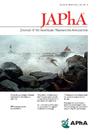Development of a productivity model at a pharmacy consolidated service center
IF 2.5
4区 医学
Q3 PHARMACOLOGY & PHARMACY
Journal of the American Pharmacists Association
Pub Date : 2025-03-01
DOI:10.1016/j.japh.2024.102298
引用次数: 0
Abstract
Background
Health systems have implemented pharmacy consolidated service centers (PCSCs) to address increased patient volume, elevated drug costs, and decreased reimbursements. Assessing pharmacy productivity remains a challenge given that metrics have historically been determined by calculations of variables that do not capture the actual work. Several investigators have demonstrated improved labor outcomes in health-system pharmacy with the use of novel productivity models. However, the utility of a novel productivity model at a PCSC has not been assessed.
Objective
This study aimed to develop a productivity model with validation by comparison to past time periods to represent work at a PCSC.
Methods
The amount of time needed to complete work was determined by performing time studies. A modified Delphi process was used to ensure an appropriate perception of workload. Time standards for each category were averaged to determine the specific relative value units, which were then multiplied by total biweekly orders and combined with fixed activities to determine the unit of service. Actual hours worked were obtained for 6 prior pay periods to compare tool productivity with actual productivity.
Results
Time studies were performed over a 3-month period. The total average hours per pay period calculated by the tool for repackaging was 167.4 or 2.1 full-time equivalents (FTEs) and for warehousing was 176.8 or 2.2 FTEs. Although tool productivity followed the same trends as historical calendar day productivity, it was consistently higher per pay period over the 12-week comparison.
Conclusion
By performing time studies, a productivity model was developed for a PCSC that generated productivity data that correlated with 12 weeks of data using a historical model. This study provides the ability to assess trends over time with a more precise evaluation of work leading to the discussion that this tool is superior to historical productivity models.
某药房综合服务中心生产力模型的建立。
背景:卫生系统已经实施了药房综合服务中心,以解决患者数量增加、药品成本上升和报销减少的问题。评估药房生产力仍然是一个挑战,因为历史上的指标是通过计算变量来确定的,这些变量不能捕捉实际工作。一些研究人员已经证明了改善劳动结果在卫生系统药房与使用新的生产力模型。然而,一种新的生产力模型在药房综合服务中心的效用尚未得到评估。目的:开发一个生产力模型,并通过与过去的时间周期进行比较来验证,以代表药房综合服务中心的工作。方法:通过时间研究确定完成工作所需的时间。采用改进的德尔菲过程来确保适当的工作量感知。对每个类别的时间标准取平均值,以确定具体的相对价值单位,然后将其乘以两周总订单,并与固定活动相结合,以确定服务单位。在比较工具生产率与实际生产率之前,获得了六个工资期的实际工作时间。结果:时间研究在三个月的时间内进行。由重新包装工具计算的每个工资期的总平均工作时数为167.4或2.1全职等值工时,而仓储工作时数为176.8或2.2全职等值工时。虽然工具生产率遵循与历史日历日生产率相同的趋势,但在12周的比较中,每个付款期的生产率始终较高。结论:通过执行时间研究,为药房综合服务中心开发了一个生产力模型,该模型使用历史模型生成与12周数据相关的生产力数据。这项研究提供了通过更精确的工作评估来评估随时间变化的趋势的能力,从而导致了该工具优于历史生产力模型的讨论。
本文章由计算机程序翻译,如有差异,请以英文原文为准。
求助全文
约1分钟内获得全文
求助全文
来源期刊
CiteScore
3.30
自引率
14.30%
发文量
336
审稿时长
46 days
期刊介绍:
The Journal of the American Pharmacists Association is the official peer-reviewed journal of the American Pharmacists Association (APhA), providing information on pharmaceutical care, drug therapy, diseases and other health issues, trends in pharmacy practice and therapeutics, informed opinion, and original research. JAPhA publishes original research, reviews, experiences, and opinion articles that link science to contemporary pharmacy practice to improve patient care.

 求助内容:
求助内容: 应助结果提醒方式:
应助结果提醒方式:


